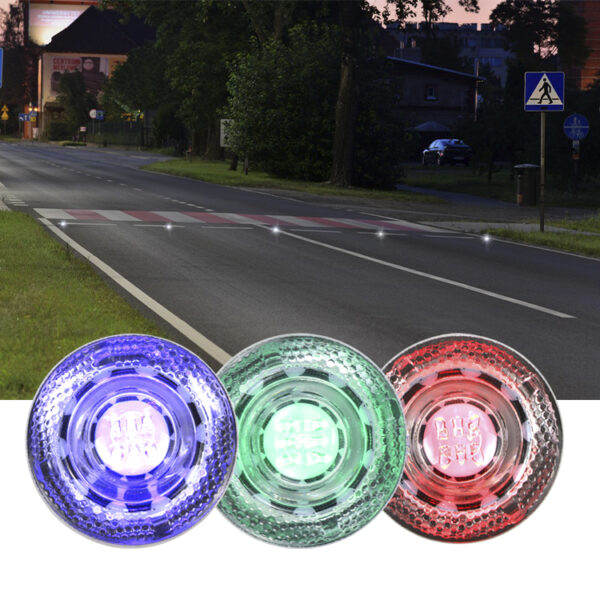There are five different kinds of motorway studs: white, amber, red, green and fluorescent green/yellow. The meaning of these studs are unchangeable so once you have learnt their meanings you can be confident of your position on the motorway.
Green
Where there is a slip road, either on or off the motorway, the reflective studs will be green so that you are aware of these junctions when visibility is poor or if it is dark. This will ensure you can identify the route you need to take off the motorway and be aware when traffic is joining the motorway.
Red
Red reflective studs can be found at the left-hand side of the motorway, in between the lane and the hard shoulder. These are there to make sure you don’t veer out of the left-hand lane into either the hard shoulder or side of the motorway if there is no hard shoulder. Red studs will help you to stay in the left lane if you are driving in the dark or on a misty day.
Amber
You will find amber coloured reflective studs on the right-hand side of the motorway, next to the central reservation. The intention of the amber studs is to keep you in the right-hand lane and away from the central reservation when the conditions are making it difficult for you to see this.
White
White studs are placed in between the lanes on a motorway to help keep you in lane. These work by reflecting the light from your headlights back to you so that you are able to distinguish the different lanes on the motorway if you are caught in a heavy downpour, or you are required to drive late at night.
Fluorescent Green and Yellow Studs
Make sure you are aware of the purpose of green and yellow fluorescent studs on the motorway. This could easily catch you out on your theory test as this motorway stud colour is less common. The purpose of green/yellow studs is to notify drivers of potential adjustments to the road layout due to their being roadworks taking place on the motorway.
There are five different kinds of motorway studs: white, amber, red, green and fluorescent green/yellow. The meaning of these studs are unchangeable so once you have learnt their meanings you can be confident of your position on the motorway.
Green
Where there is a slip road, either on or off the motorway, the reflective studs will be green so that you are aware of these junctions when visibility is poor or if it is dark. This will ensure you can identify the route you need to take off the motorway and be aware when traffic is joining the motorway.
Red
Red reflective studs can be found at the left-hand side of the motorway, in between the lane and the hard shoulder. These are there to make sure you don’t veer out of the left-hand lane into either the hard shoulder or side of the motorway if there is no hard shoulder. Red studs will help you to stay in the left lane if you are driving in the dark or on a misty day.
Amber
You will find amber coloured reflective studs on the right-hand side of the motorway, next to the central reservation. The intention of the amber studs is to keep you in the right-hand lane and away from the central reservation when the conditions are making it difficult for you to see this.
White
White studs are placed in between the lanes on a motorway to help keep you in lane. These work by reflecting the light from your headlights back to you so that you are able to distinguish the different lanes on the motorway if you are caught in a heavy downpour, or you are required to drive late at night.
Fluorescent Green and Yellow Studs
Make sure you are aware of the purpose of green and yellow fluorescent studs on the motorway. This could easily catch you out on your theory test as this motorway stud colour is less common. The purpose of green/yellow studs is to notify drivers of potential adjustments to the road layout due to their being roadworks taking place on the motorway.
